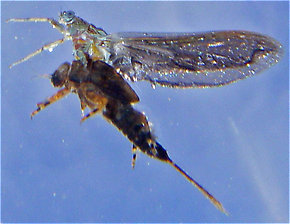Blog & Latest Updates
Fly Fishing Articles
Insects by Common Name


Troutnut.com User Curlystock
Send Curlystock a Private Message
To do this you have to log in at the top of the page. If you haven't registered yet, it's this easy:Curlystock's Favorite Troutnut.com Pictures
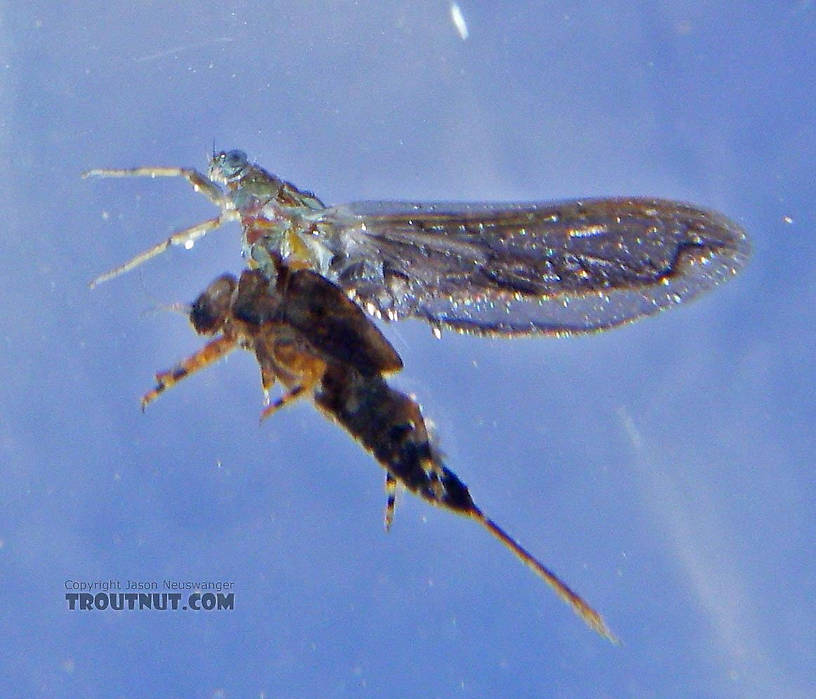
This is a close-up underwater view of a stillborn (Stillborn: In fly fishing, a stillborn insect is one which got stuck in its nymphal or pupal shuck during emergence and floats helplessly on the surface instead of flying away. It is a specific class of cripple, although it is sometimes used interchangeably with that term.) Ephemerella subvaria (Henrickson) female dun.
In this picture: Mayfly Species Ephemerella subvaria (Hendrickson).
In this picture: Mayfly Species Ephemerella subvaria (Hendrickson).
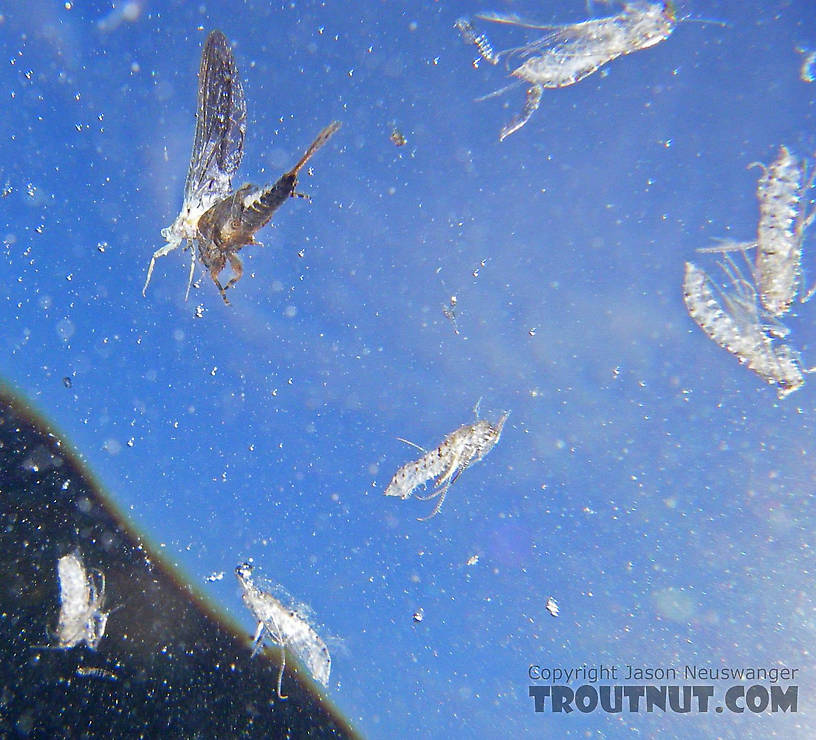
This picture from below shows a stillborn (Stillborn: In fly fishing, a stillborn insect is one which got stuck in its nymphal or pupal shuck during emergence and floats helplessly on the surface instead of flying away. It is a specific class of cripple, although it is sometimes used interchangeably with that term.) Ephemerella subvaria (Hendrickson) dun drifting on the surface amidst a number of shed pupal skins from Brachycentrus caddisflies which were heavily hatching that day.
In this picture: Mayfly Species Ephemerella subvaria (Hendrickson) and Caddisfly Species Brachycentrus appalachia (Apple Caddis).
In this picture: Mayfly Species Ephemerella subvaria (Hendrickson) and Caddisfly Species Brachycentrus appalachia (Apple Caddis).
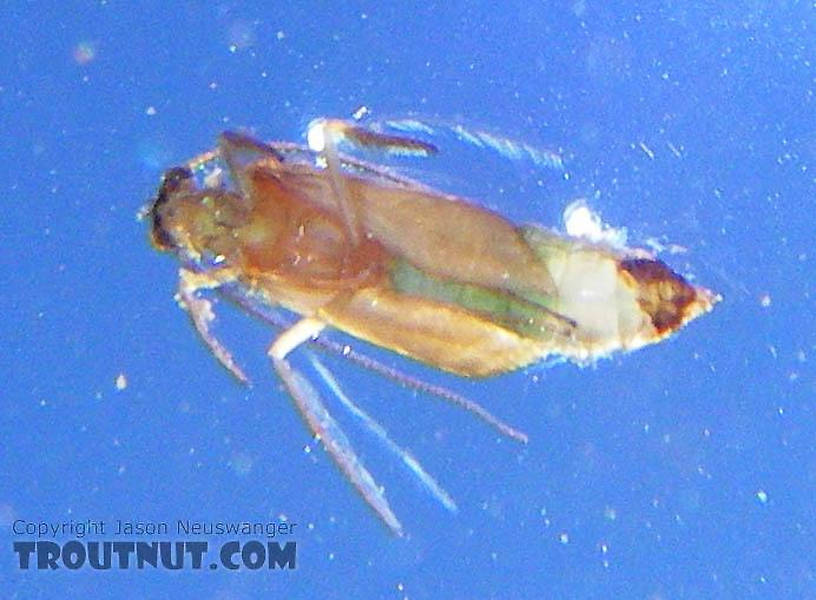
A Brachycentrus "Apple Caddis" pupa scoots around in the surface film. Apparently it had some difficulty emerging, so I was able to slip my camera underneath it and take a picture from below.
In this picture: Caddisfly Species Brachycentrus appalachia (Apple Caddis).
In this picture: Caddisfly Species Brachycentrus appalachia (Apple Caddis).
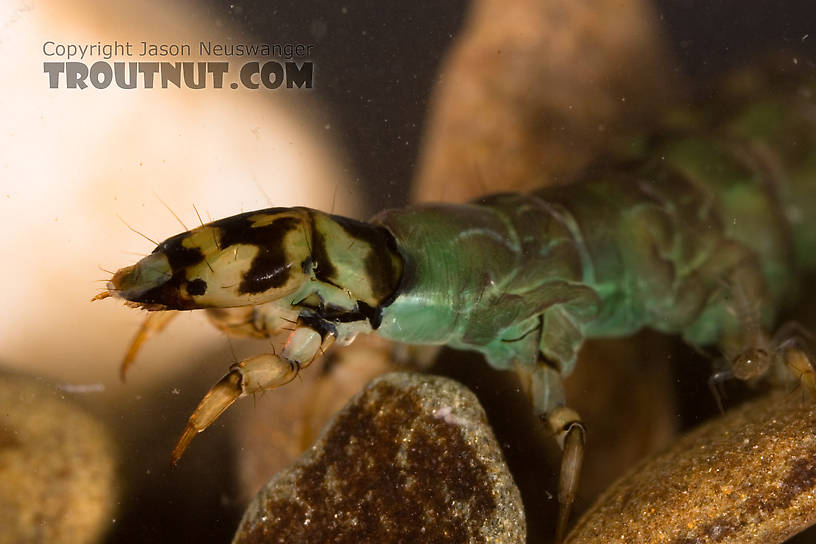
AuthorTroutnut
CameraCanon EOS 20D
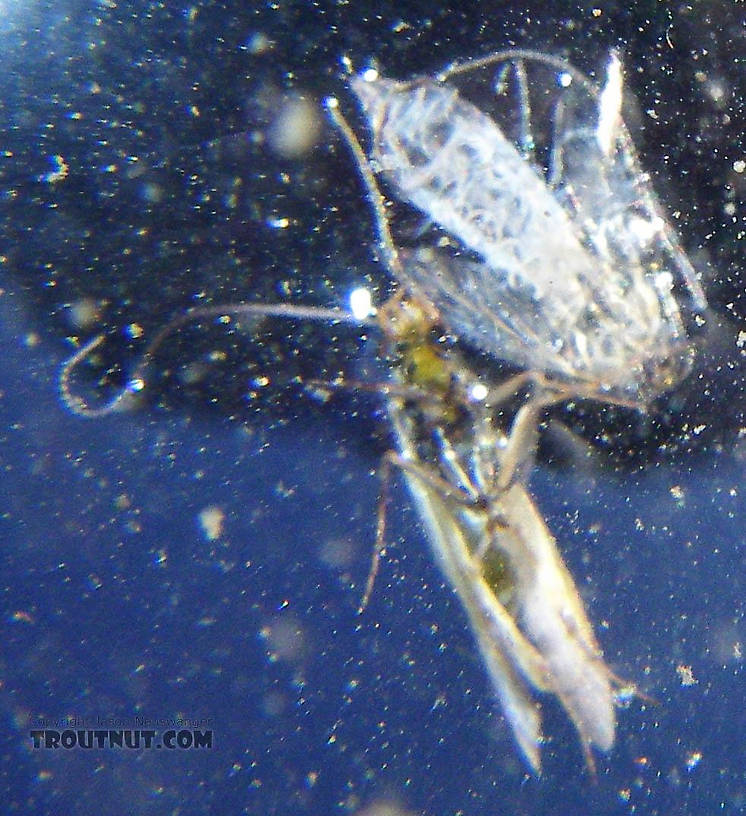
This Brachycentrus "Apple Caddis" struggled more than its kin in escaping its pupal skin, enabling me to take an underwater picture of it from directly below. This is sort of a trout's eye view, but I used the flash for the picture so the transparent shuck (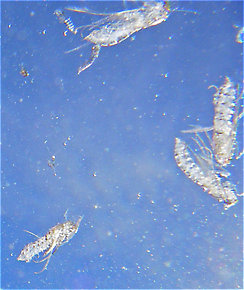 Shuck: The shed exoskeleton left over when an insect molts into its next stage or instar. Most often it describes the last nymphal or pupal skin exited during emergence into a winged adult.) appears far brighter than it really is.
Shuck: The shed exoskeleton left over when an insect molts into its next stage or instar. Most often it describes the last nymphal or pupal skin exited during emergence into a winged adult.) appears far brighter than it really is.
In this picture: Caddisfly Species Brachycentrus appalachia (Apple Caddis).

Here's an underwater view of the pupal shucks of several already-emerged Brachycentrus numerosus caddisflies.
In this picture: Caddisfly Species Brachycentrus appalachia (Apple Caddis).
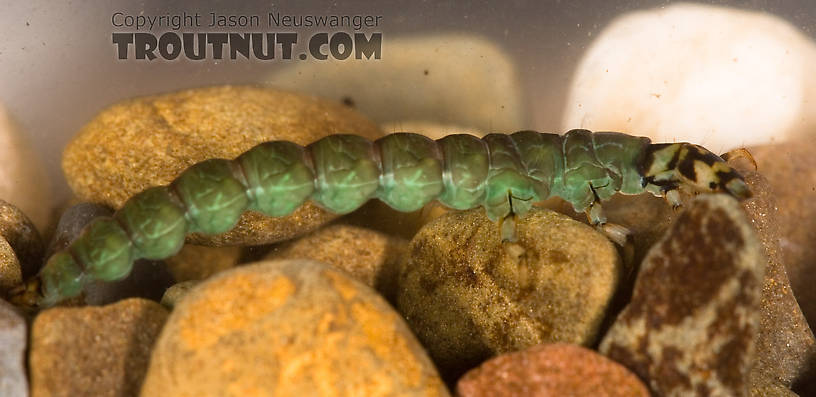
AuthorTroutnut
CameraCanon EOS 20D
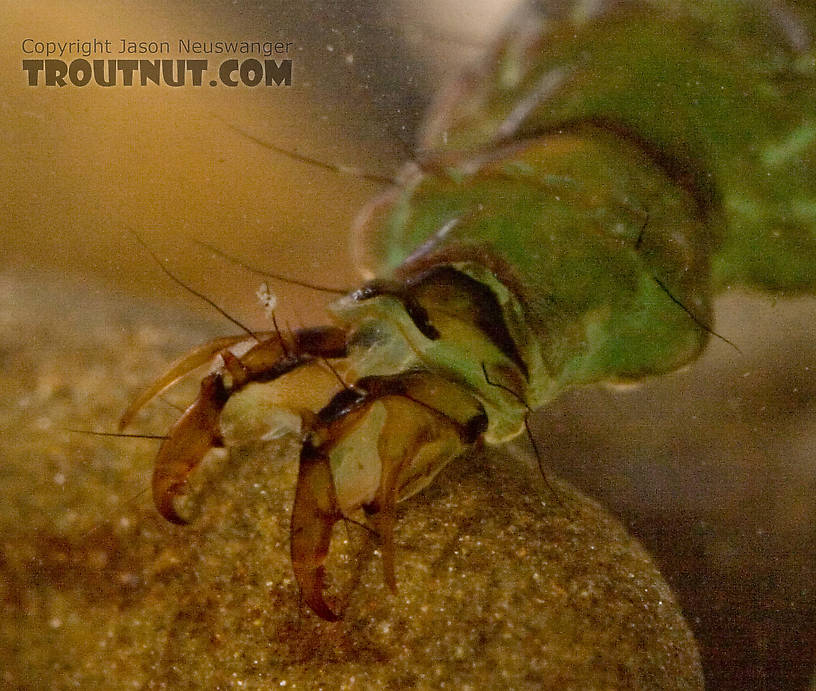
This picture came out poorly, but it still shows pretty well just what effective tools those rear prolegs are for caddis larvae to grip the rocks. It can be surprisingly hard to pick them up when they're grabbing onto something.
Rhyacophila fuscula (Green Sedge) Caddisfly Larva from Mystery Creek #62 in New York
Rhyacophila fuscula (Green Sedge) Caddisfly Larva from Mystery Creek #62 in New York
AuthorTroutnut
CameraCanon EOS 20D
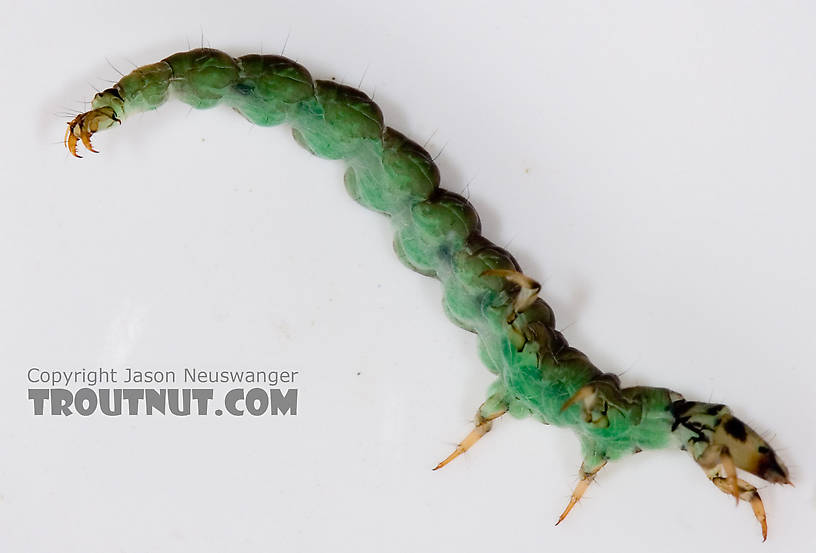
AuthorTroutnut
CameraCanon EOS 20D
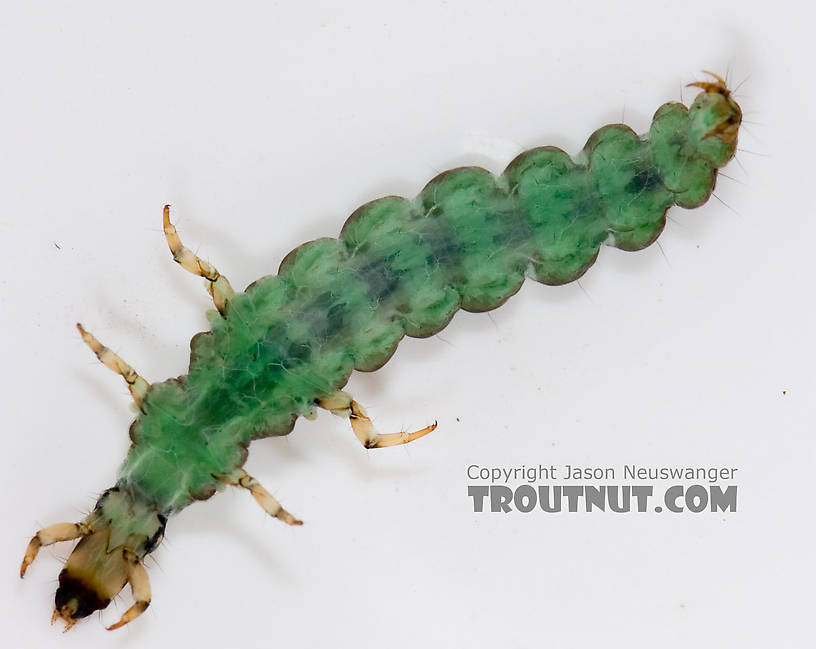
AuthorTroutnut
CameraCanon EOS 20D
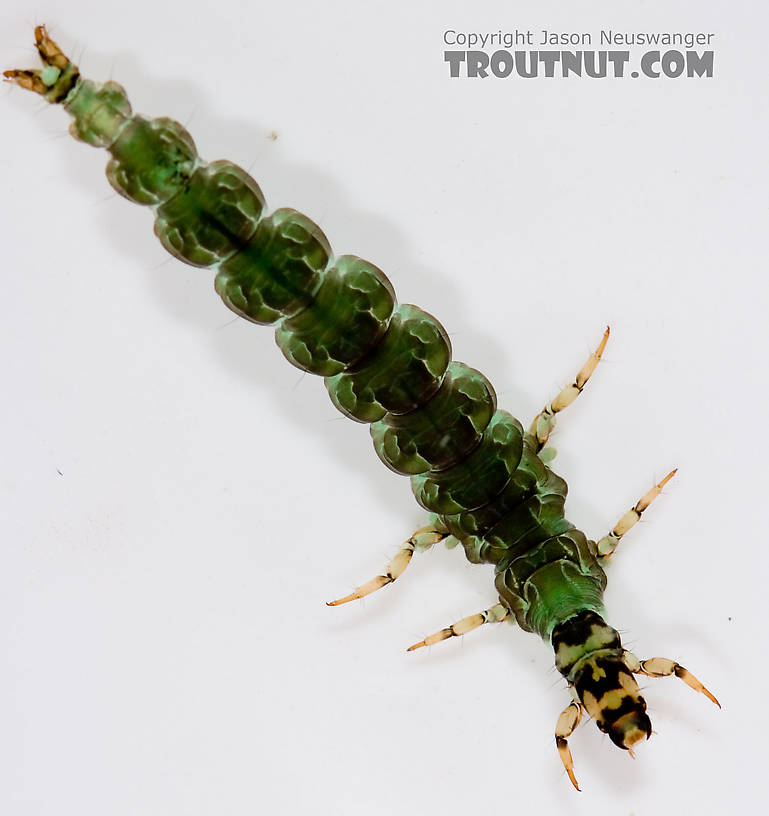
AuthorTroutnut
CameraCanon EOS 20D
Troutnut.com is copyright © 2004-2024 Jason
Neuswanger (email Jason). See my FAQ for information about use of my images.
 privacy policy
privacy policy

